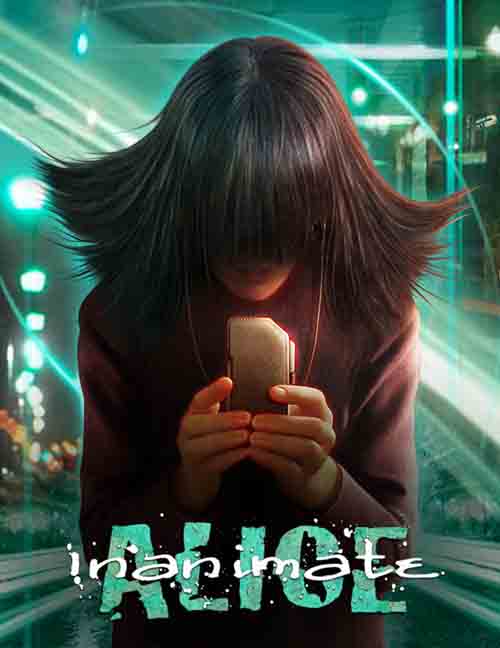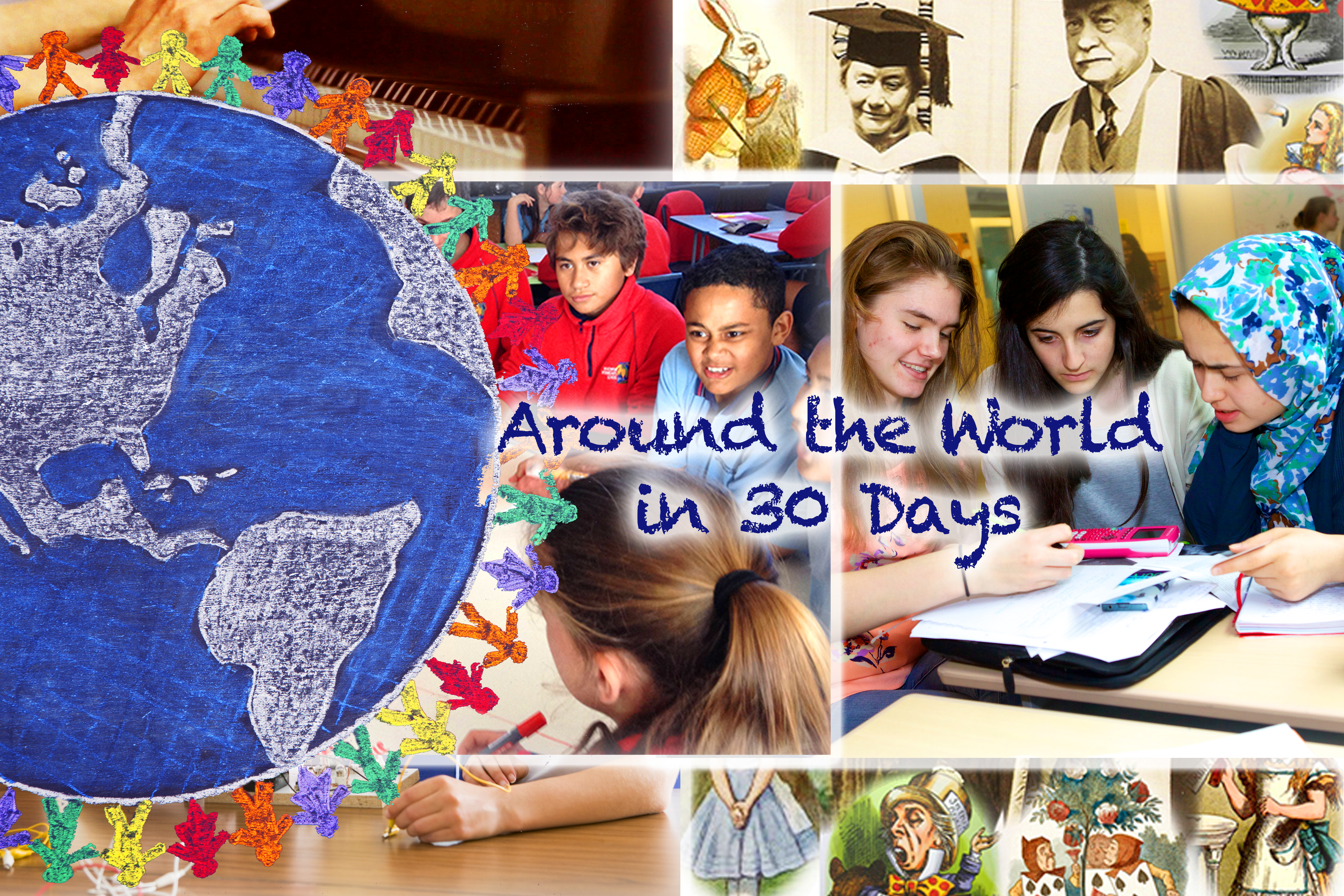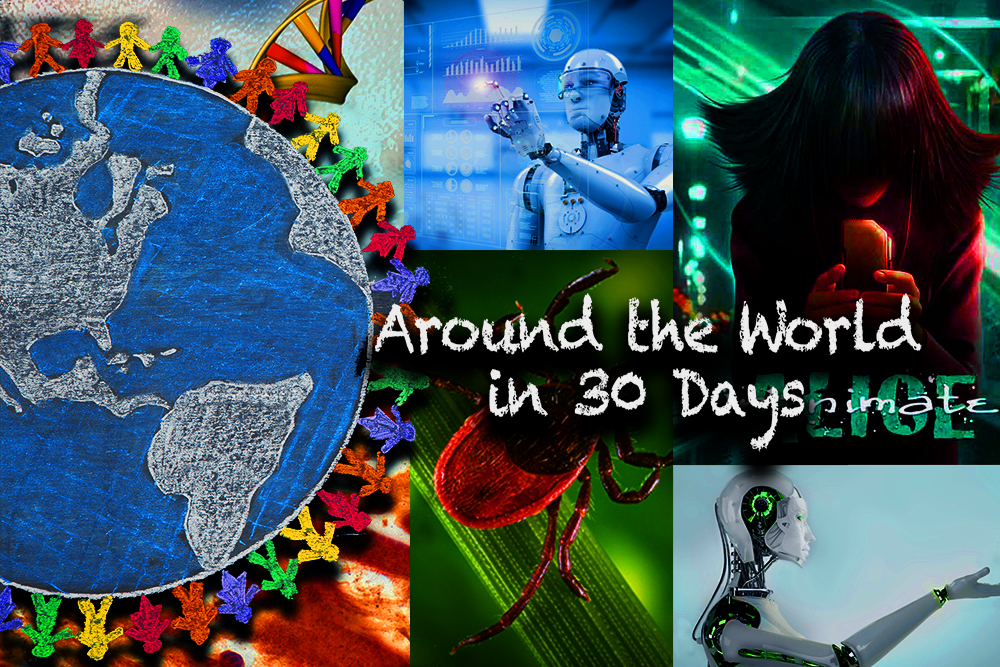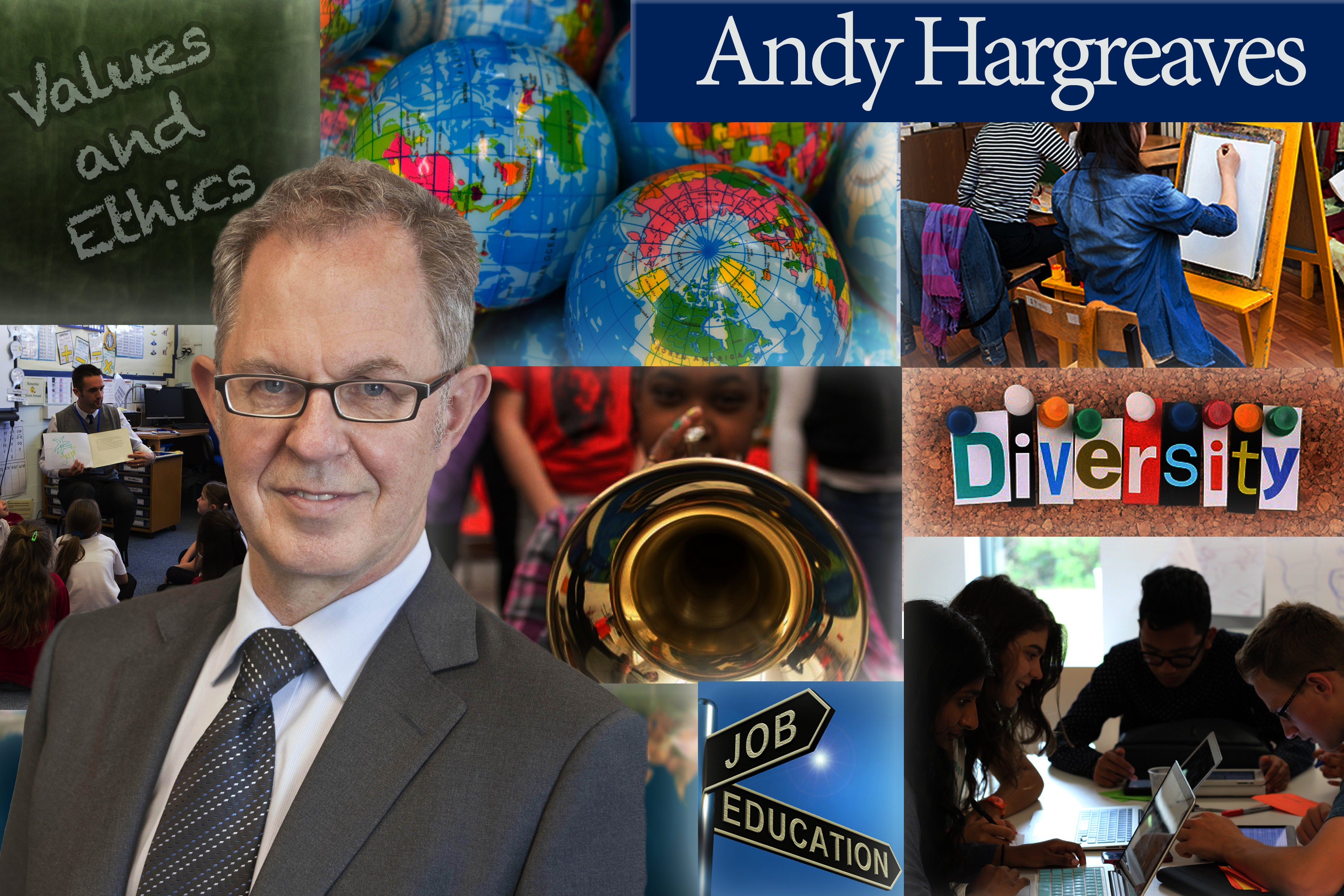“When breaking away from the strict confines of print, words become dynamic, they gain an energy of their own. They go upstairs and down, around corners, underwater. They express themselves, they show what they are about.” — Ian Harper
Welcome to digital story-telling.
Imagine a story that transports you to every corner of the world – a virtual journey that you help create because it is not just the author’s tale about his protagonist – indeed you are required to be part of the journey.
In 2004, Ian Harper wrote a screenplay in which a game designer called Alice creates a game to save-the-world. Harper says that novelist Kate Pullinger and digital artist Chris Joseph determined that the movie would be more engaging if the audience got to know Alice better.
Inanimate Alice is the backstory to what Harper calls that “longed-for movie”. Through interactive games, puzzles and more, we meet Alice. We interact with her as she grows up and develops her skills through real-life conflicts, and struggles towards her dream of becoming a game designer. Alice’s journey is “an imperative” says Harper.
The Global Search for Education is pleased to welcome Ian Harper to talk about Inanimate Alice and story-telling in a virtual world.
“Alice’s tale is that of a digital native, visiting places and meeting people on her own terms, experiencing the world in ways that have not been available to previous generations.” — Ian Harper
Why do you think this type of storytelling is “innovative” and “relevant” to digital natives?
It’s innovative in two ways. We expect words to behave in certain ways that are determined by print formats. We read left to right, top to bottom. Those constraints have been with us for so long we find it hard to think beyond the book, beyond the ebook and ubiquitous PDF to what other possibilities lie in wait. So we imagined what we would do with words – more than that, what the words themselves tell us to do. When breaking away from the strict confines of print, words become dynamic, they gain an energy of their own. They go upstairs and down, around corners, underwater. They express themselves, they show what they are about.
Secondly, the progressive complexity of the story is its unique feature. From episode to episode, each element in the series, each side trip and season, mirrors Alice’s age and digital competency. Just like real life, it demonstrates the incremental improvements that education provides. In the first episode, we see Alice in China at eight years of age drawing a stickman and taking photos to send to her dad. At 19, she is a competent digital artist producing the VR adventure, Perpetual Nomads, while at college. In between, we experience with her the progress she has made, step-by-step. Just like life, in fact.
Digital communications have shrunk the world to the extent that, at least in the individual’s perception, everyone is potentially your next-door neighbor. Now you have instantaneous audio-visual “in the room” communication with friends and acquaintances the world over at almost zero cost. Just a generation ago that quality of communication was only available directly, at home, school or on the street corner. This connectivity has a profound effect on our consideration for other people who share the same small planet with us. Alice’s tale is that of a digital native, visiting places and meeting people on her own terms, experiencing the world in ways that have not been available to previous generations. Perhaps today, more than ever, it is a brave new world unfolding before her eyes.
Do you think this form of story-telling nurtures readers or creators or both?
In recent years, the ways in which people, particularly young people, communicate have changed dramatically. Alice’s tale provides a narrative structure that uses authentic language delivered in a format that is relevant to digital natives.
Inanimate Alice employs game-like techniques to capture the imagination. The narrative is interspersed with puzzles and mini-games which require resolution before the story continues. In the beginning, these are very simple, growing more complex as the episodes unfold and Alice grows up. It acts as a primer for those who are not familiar with games. In a similar way as picture books provide settings for characters and plot, Inanimate Alice is built on images, music, sound effects, interactivity…. it’s the same logic, just much more intense.
Students frequently conclude, “I can do that.” After experiencing just a few episodes, they cannot wait to create their own story, their own next episode. Such production fosters collaboration and regularly takes weeks, sometimes months, of dedicated effort. The results are rewarding for all – teachers, students and parents.
“The setting is a bus journey through the desert. It’s a driverless bus and you are its only passenger. The bus breaks down. What do you do now? Within a few minutes, you are experiencing a whole new environment, you are seeking information, help.” — Ian Harper
What other skills does Inanimate Alice nurture?
It talks of multicultural societies and empathy. It investigates societal issues like peer pressure. It speaks to issues surrounding identity in a highly-connected world. Take the latest adventure, Perpetual Nomads, as an example. You play Alice. You see the world through her eyes. The setting is a bus journey through the desert. It’s a driverless bus and you are its only passenger. The bus breaks down. What do you do now? Within a few minutes, you are experiencing a whole new environment, you are seeking information, help. You are disconnected and faced with mis-information, conflict and potential danger. All is resolved and Alice gets on her way once again, however, the experience remained with her for quite some time.
Where in the world are they connecting with Inanimate Alice?
The target audience is 10-14 year olds. With a female protagonist, the audience leans towards girls yet there is plenty of tension, dynamism and gameplay to retain the interest of boys too. The material plays to a wider audience with great success seen with 7-8 year olds and with older students when focused on the episodes where Alice is their age or older. Each episode is a complete and self-contained story, so older students joining the adventure at, say, episode 3, will not be lacking in context.
There is a substantial secondary audience in higher education where the title is used for comparative studies in Modern Literature (comparing digitally delivered texts with traditional). We see examples of such university courses in Canada and in Russia. Meanwhile, research into digitally delivered language acquisition is engaging teachers in EFL training in the Netherlands while US research employs eye-tracking technology to better understand its efficacy. In Australia, where the series is embedded in the curriculum, starting teachers graduate prepared to work with the material from the outset. Most recently, the work has been selected for the National Reading Plan in Portugal where translation of the episodes and educational supports is under way.
C.M. Rubin and Ian Harper
Join me and globally renowned thought leaders including Sir Michael Barber (UK), Dr. Michael Block (U.S.), Dr. Leon Botstein (U.S.), Professor Clay Christensen (U.S.), Dr. Linda Darling-Hammond (U.S.), Dr. MadhavChavan (India), Charles Fadel (U.S.), Professor Michael Fullan (Canada), Professor Howard Gardner (U.S.), Professor Andy Hargreaves (U.S.), Professor Yvonne Hellman (The Netherlands), Professor Kristin Helstad (Norway), Jean Hendrickson (U.S.), Professor Rose Hipkins (New Zealand), Professor Cornelia Hoogland (Canada), Honourable Jeff Johnson (Canada), Mme. Chantal Kaufmann (Belgium), Dr. EijaKauppinen (Finland), State Secretary TapioKosunen (Finland), Professor Dominique Lafontaine (Belgium), Professor Hugh Lauder (UK), Lord Ken Macdonald (UK), Professor Geoff Masters (Australia), Professor Barry McGaw (Australia), Shiv Nadar (India), Professor R. Natarajan (India), Dr. Pak Tee Ng (Singapore), Dr. Denise Pope (US), Sridhar Rajagopalan (India), Dr. Diane Ravitch (U.S.), Richard Wilson Riley (U.S.), Sir Ken Robinson (UK), Professor Pasi Sahlberg (Finland), Professor Manabu Sato (Japan), Andreas Schleicher (PISA, OECD), Dr. Anthony Seldon (UK), Dr. David Shaffer (U.S.), Dr. Kirsten Sivesind (Norway), Chancellor Stephen Spahn (U.S.), Yves Theze (LyceeFrancais U.S.), Professor Charles Ungerleider (Canada), Professor Tony Wagner (U.S.), Sir David Watson (UK), Professor Dylan Wiliam (UK), Dr. Mark Wormald (UK), Professor Theo Wubbels (The Netherlands), Professor Michael Young (UK), and Professor Minxuan Zhang (China) as they explore the big picture education questions that all nations face today.
The Global Search for Education Community Page
C. M. Rubin is the author of two widely read online series for which she received a 2011 Upton Sinclair award, “The Global Search for Education” and “How Will We Read?” She is also the author of three bestselling books, includingThe Real Alice in Wonderland, is the publisher ofCMRubinWorld and is a Disruptor Foundation Fellow.
Follow C. M. Rubin on Twitter: www.twitter.com/@cmrubinworld









Recent Comments